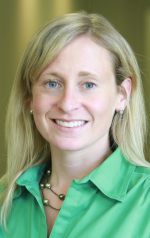
The weekly Prescriptions for Health column is part of an ongoing community health education effort by Franklin Memorial Hospital to provide information on an important health topic by its medical staff, with support from intern Sam Bennett, a junior at the University of Maine at Farmington majoring in biology and creative writing.
By Kendra Emery, DO
Do you know why everyone’s talking about osteopathic manipulation medicine? Since its founding in 1874, osteopathy has become the fastest growing field of medicine in the U.S., with one in five medical students training in osteopathic medicine. It’s the perfect time to learn about what the benefits of osteopathic manipulation medicine are so you can see if it’s right for you.
In osteopathic manipulation medicine, or OMM for short, doctors use their hands and various techniques such as high velocity low amplitude, counterstrain, muscle energy, and cranial techniques to treat muscles, bones, ligaments, and fascia. OMM is truly “hands-on” medicine, as many of its practitioners will tell you. The purpose of this treatment is to bring the body into balance for healing, allowing the body’s self-regulatory mechanisms to further eliminate pain and heal. Although OMM can be used to treat problems in any part of the body, such as headaches or leg swelling, it’s most commonly used for pain in the neck or back. In fact, studies have shown that patients who receive OMM for lower back pain recover just as quickly as those receiving other treatments without needing as much medication or physical therapy.
The central philosophy of OMM is that structure influences function. In other words, osteopathic manipulation medicine helps with healing the body’s ailments by treating the physical stresses that cause them. An osteopathic physician, or DO, will consider every aspect of a patient’s life when performing an exam so the doctor can address the causes of each problem accordingly. That’s what makes OMM a form of holistic medicine−looking at the big picture behind an ailment rather than the individual symptoms it manifests as. In addition to promoting fast recovery, this level of care and consideration in treatment allows for an intimate connection between the doctor and the patient, which is only made closer by the way OMM, uses the hands to treat patients, rather than tools or machines. It’s for this reason that many patients favor osteopathic manipulation medicine.
A Doctor of Osteopathic Medicine (DO) is as fully trained as a Doctor of Medicine (MD) and carries an equal license. OMM is a component of osteopathic medicine that can be used alone or in combination with medication, patient education, diet and exercise interventions, and other medical treatments. Thus, osteopathic physicians have an extra set of tools at their disposal to use when the need arises.
If you are suffering from a condition that causes pain and discomfort, ask your primary care provider if your condition could benefit from osteopathic manipulative medicine. OMM can ease pain, promote healing, and increase overall mobility for patients of all ages. Now is as good a time as any to consider how these treatments could benefit your life.
Dr. Kendra Emery joined Franklin Health Farmington Family Practice in 2012. Dr. Emery grew up in the area and after completing a residency in Colorado had a desire to return to her roots and practice family medicine in Maine. Dr. Emery resides in Farmington with her husband Nick Citriglia and young son. During her free time she enjoys all that Maine has to offer including mountain biking, trail marathons, triathlons, and skiing.




